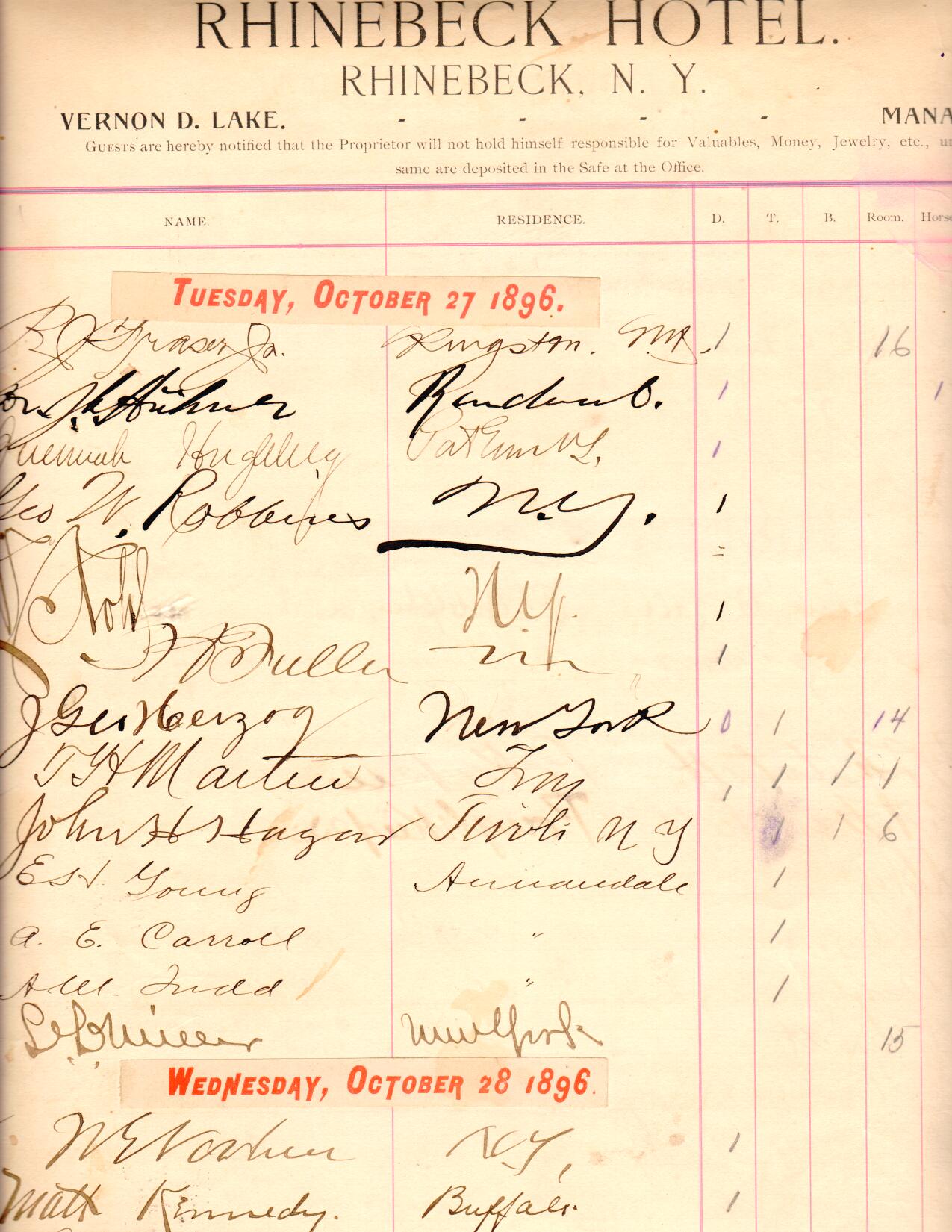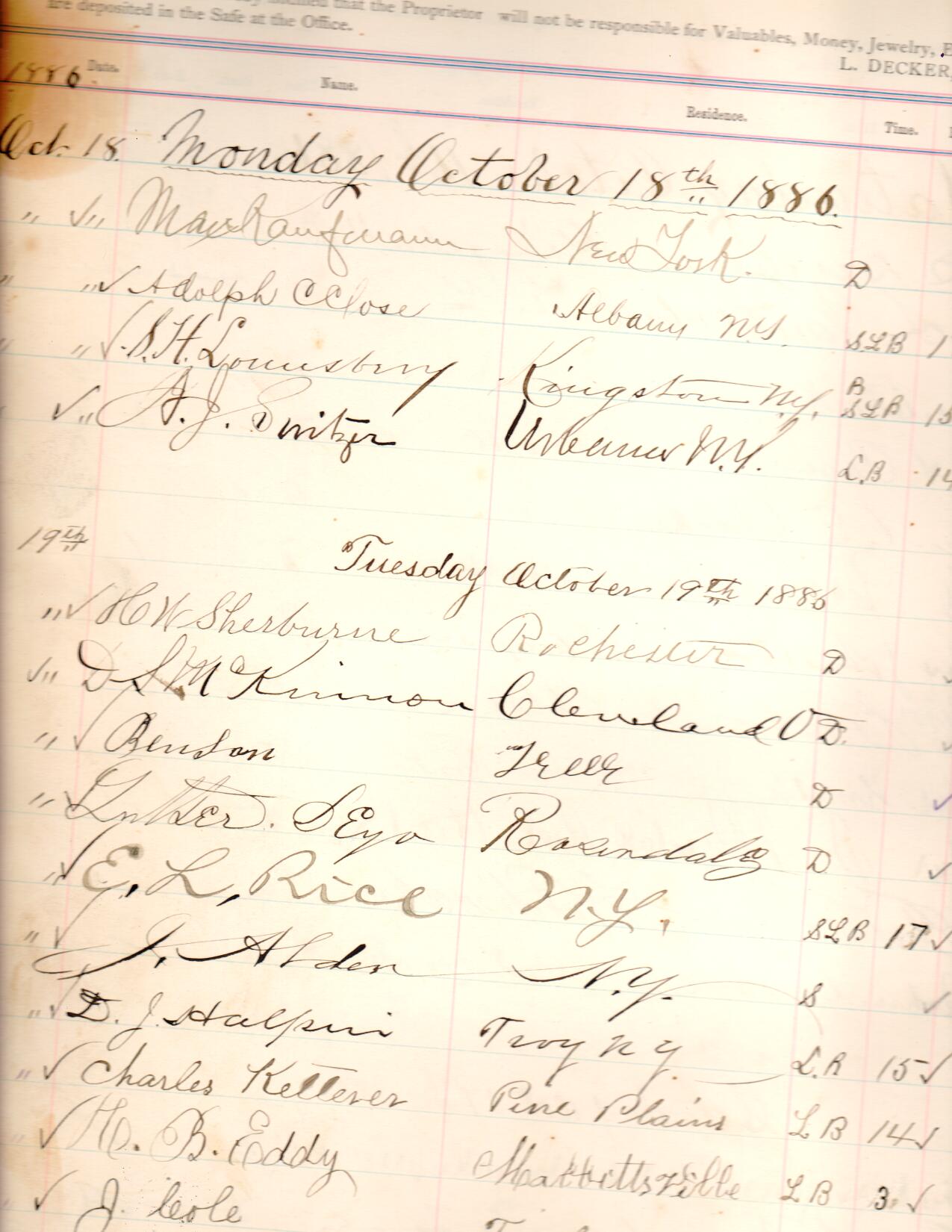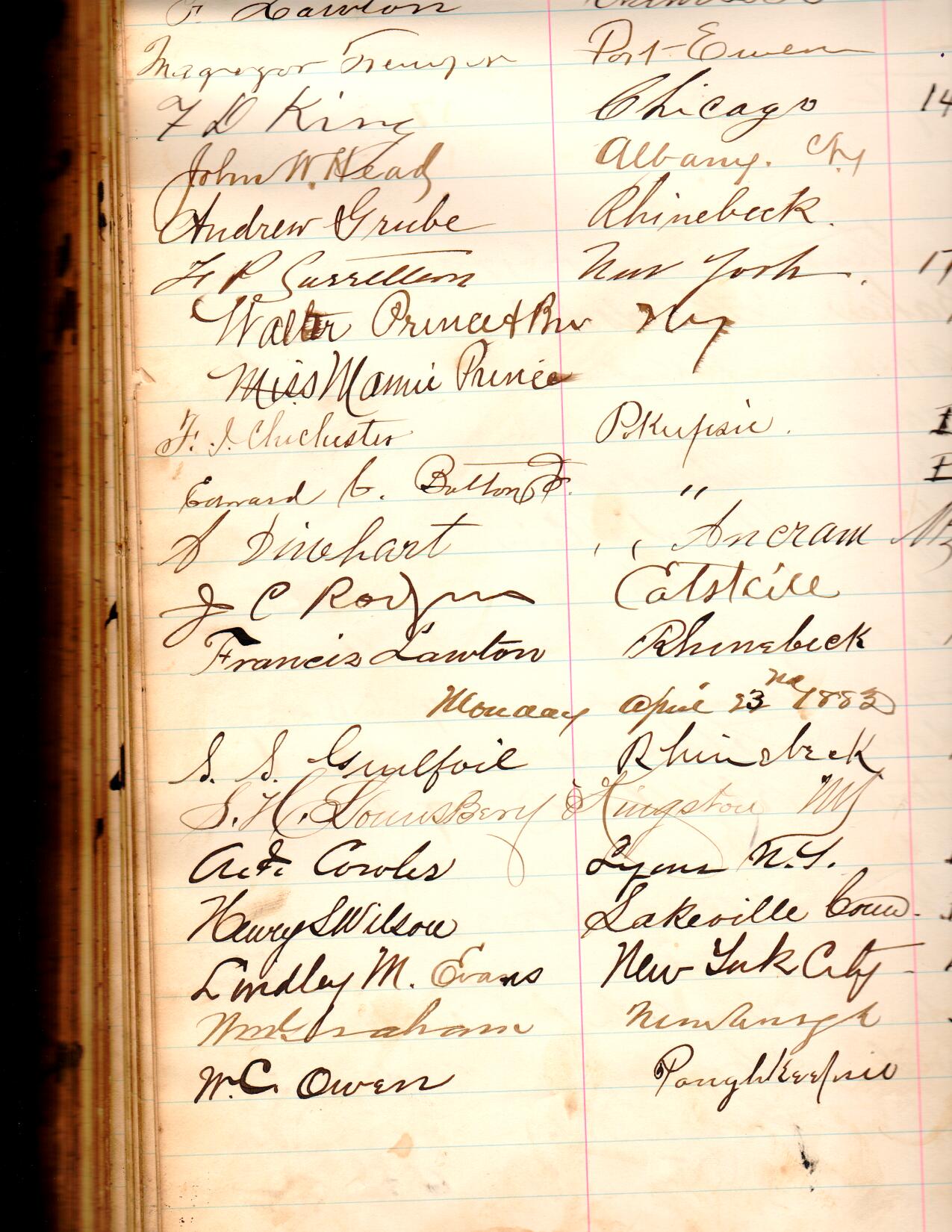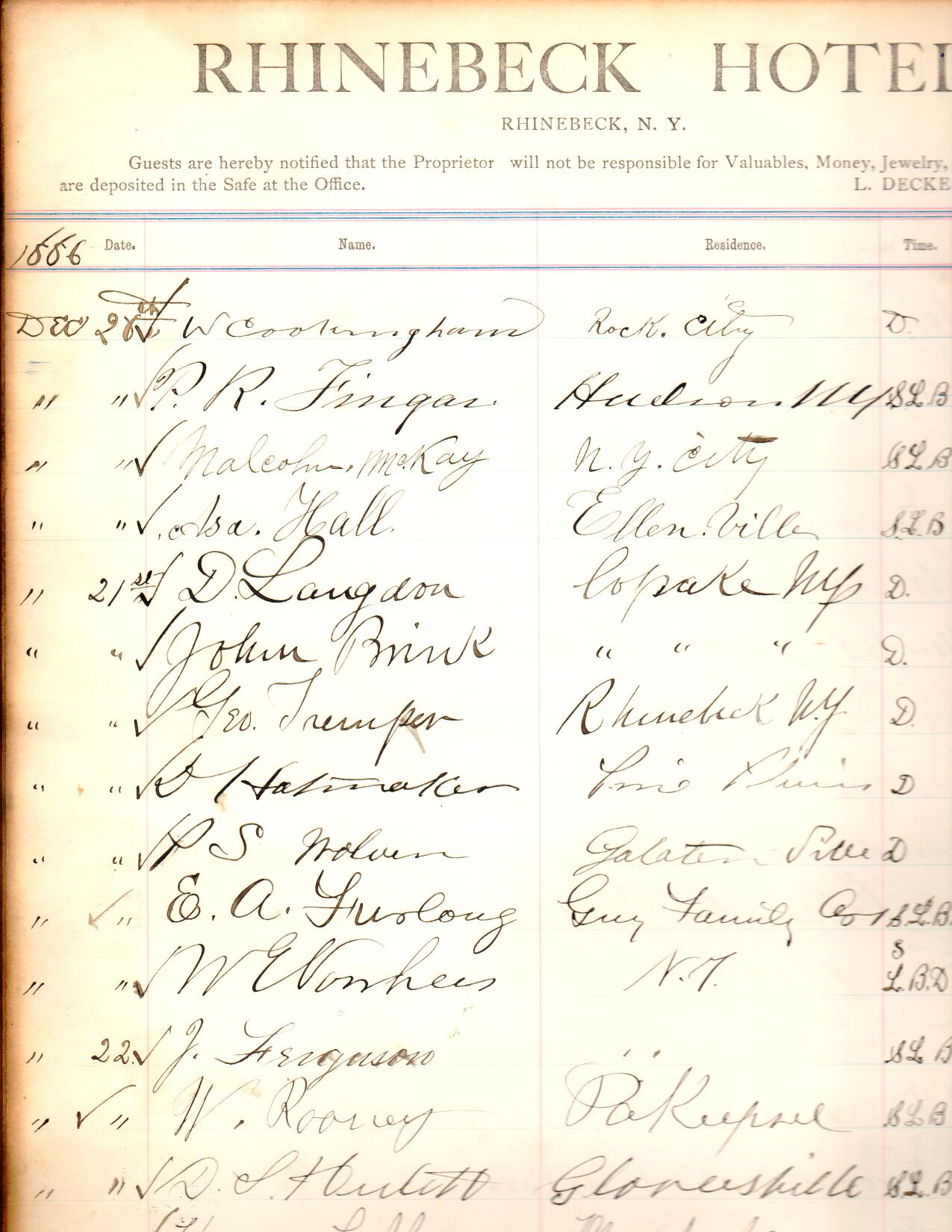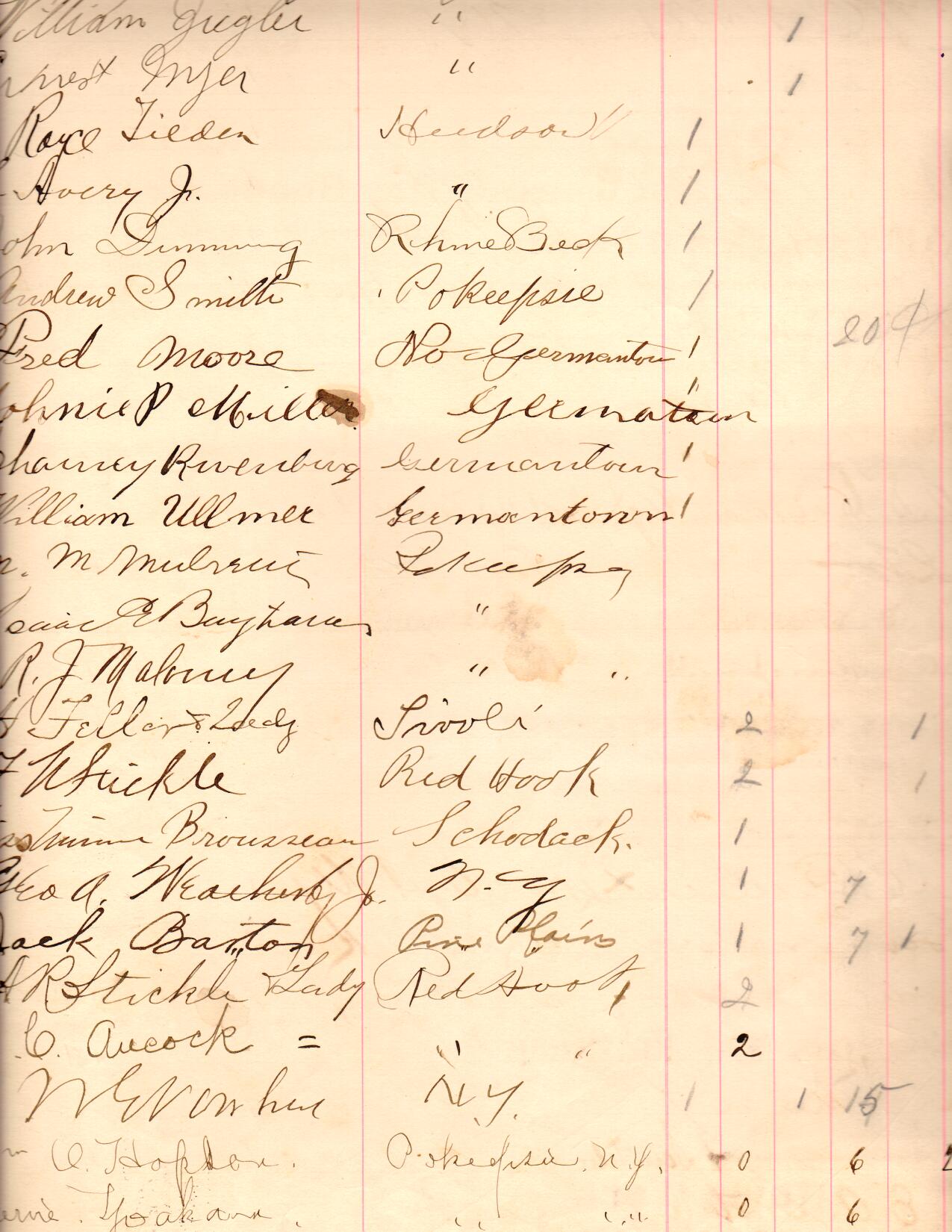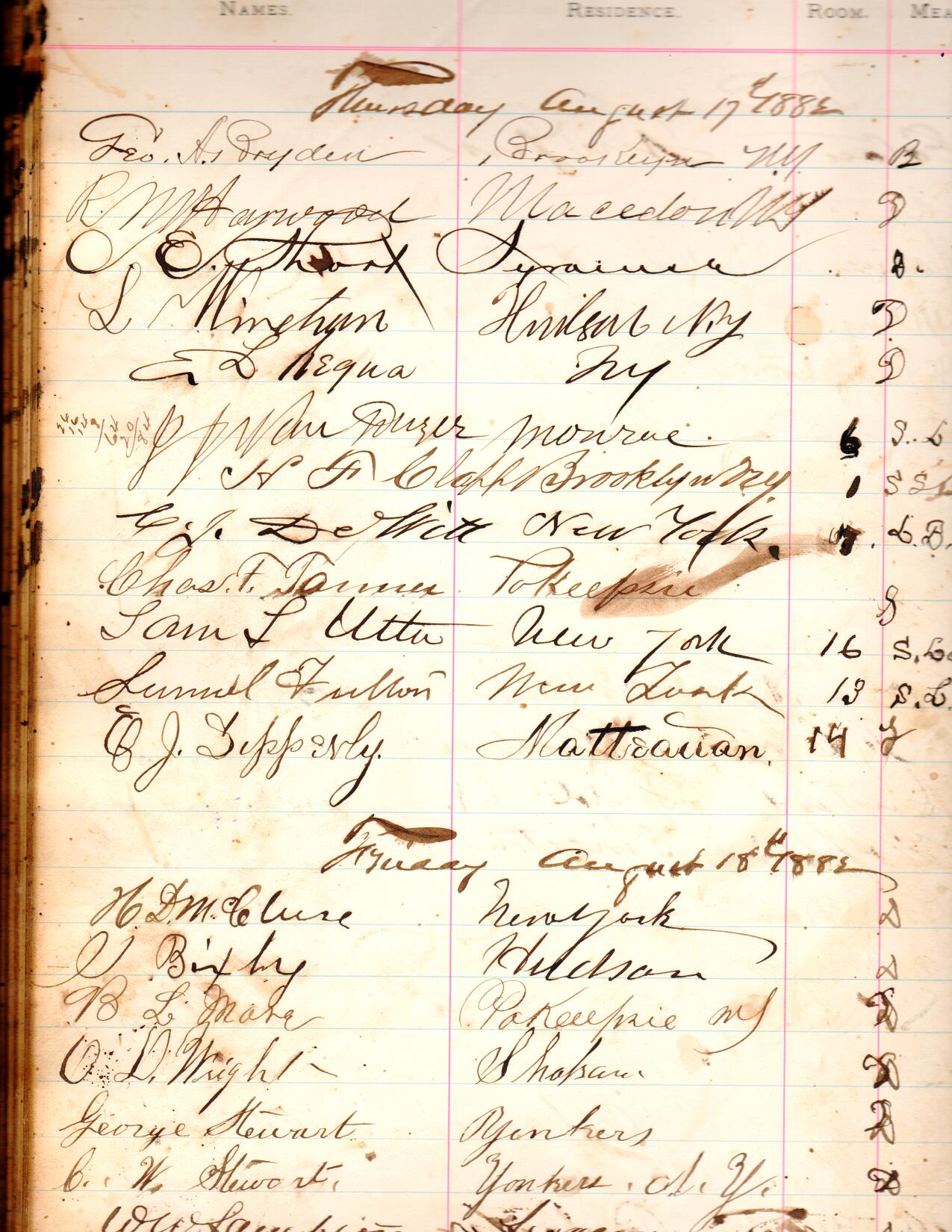History
In 1704, William Traphagen established a traveler's inn, the Traphagen Tavern, at the town crossroads. At the time, Ryn Beck was a small settlement being carved out of the forests initially inhabited by the Sepasco Native Americans. The area had been colonized since the 1680s by the Dutch, where the King's Highway, now known as Route 9, intersected the Sepasco Trail, winding its way down to the Hudson River. The Beekman Arms was added to the original tavern in 1766 and has been operating ever since.
The Beekman Arms was named after the Beekman family. At the time, Judge Henry Beekman numbered prominently among the original British Crown land owners in the Hudson Valley. Colonel Henry Beekman Jr. expanded his father's land holdings and populated them with refugees from Europe's Palatine-Rhine region.
Bogardus Tavern, as the building was known during the last third of the 18th century, helped host the American Revolution. The Fourth Regiment of the Continental Army performed drills on the front lawn in preparation for the war. A sturdy timber and stone building originally built to withstand possible Native American attacks, the Bogardus Tavern served similar purposes during the war with the British Crown. The townsfolk took refuge here while the British burned the state capital, Kingston, across the river. George Washington, Philip Schuyler, Benedict Arnold, and Alexander Hamilton all slept, ate, drank, argued, and laughed here throughout the Revolutionary War.
By 1785, the King's Highway had been renamed as the new nation's Post Road. The year 1804 saw an intense race for the governorship of New York State. Both candidates had headquarters in Rhinebeck. General Morgan Lewis was based here, while Vice President Aaron Burr was based down the street at the Kip Tavern. By July of that year, Aaron Burr had killed Morgan Lewis's friend and Philip Schuyler's brother-in-law, Alexander Hamilton, in a duel over a quarrel that had begun in our tavern.
Rhinebeck continued to grow in the early 19th century in both size and popularity as a stop between New York City and Albany. It was also the center of the town's civic growth serving as the town hall, post office, theater, and newspaper publisher. The tavern hosted lodge meetings, tea parties, public auctions, and even religious services conducted by traveling preachers. The famous newspaper editor Horace Greeley was a frequent guest. William Jennings Bryan grandly orated from a second-story window to an enthusiastic gathering on the front lawn. In 1888, Benjamin Harrison and his running mate, Levi Morton, assembled in the inn with their supporters, where they learned the convention had picked them to run for the presidency.
During the prosperous years between the Civil War and World War I, many prominent and wealthy New York families built country estates on the banks of the Hudson River. Luxurious private railroad cars terminated at the Rhinecliff Station, a handsome building erected under the influence of former Vice President Morton and Colonel John Jacob Astor IV, who perished on the Titanic shortly thereafter. A rail line connected Rhinecliff and Connecticut, greatly easing travel to and from the area. Travelers called it the Hucklebush Line, as the train's engineer was known to stop the train at one of the many berry-picking patches along the way.
Rhinebeck became known as the Parlor of Dutchess County due to its shaded streets, village hospitality, gracious homes, and grand estates. The local farms' black angus and greenhouses' violets gave the small town national attention. Horses and buggies gradually gave way to automobiles and trucks and the Beekman Arms kept its doors open to the surrounding community and to the travelers moving through the Hudson Valley.
In 1918, the inn underwent extensive renovation, including the addition of today's ballroom, under the ownership of Tracy Dows. His son, Olin Dows, was a well known painter whose murals recreate the town's beginnings on the walls of the Rhinebeck post office. His Harvard classmate and close friend Thomas Wolfe frequently visited. Thomas' prolonged retreats at the Beekman Arms planted the seeds for what became his 1935 novel, Of Time and the River.
President Franklin Delano Roosevelt was a frequent guest at the Beekman Arms. He concluded each of his four political campaigns for governor and president talking from the front porch. As an avid stamp collector and an amateur historian, President Roosevelt was responsible for the construction of the Rhinebeck Post Office, which was built by the Works Progress Administration. The post office is a replica of a portion of the Hendrick Kip house, the earliest known structure in Rhinebeck.
Throughout the 20th century, The Beekman Arms continued to be the center of social and civic life for Rhinebeck. It hosted thousands of town and service club meetings, weddings, all varieties of parties and celebrations and leisurely Sunday brunches and dinners. In the 1930s, young ladies training to be nurses relaxed at the inn after their hospital shifts. Firefighters and World War II soldiers paraded and posed for photographs on the surrounding lawn and streets.
In 1958, Charles LaForge bought the inn, becoming the longest running owner of the Beekman Arms. In the 1980s, Charles added the greenhouse to the front of the ballroom. He purchased the nearby Delamater Inn and renovated much of the property. Charles also began adding more guest rooms when he constructed the Courtyard Complex behind the Delamater Inn. In 2002, George Banta Sr. purchased the Beekman Arms and Delamater Inn from Mr. LaForge.
Few changes have been made to the Beekman Arms' original structure of strong oaken beams and broad plank floors. A fire in our hearth still warms guests from cold winter nights and in the tavern, residents and visitors continue to gather, eat, drink, and talk, as they have since 1704.

